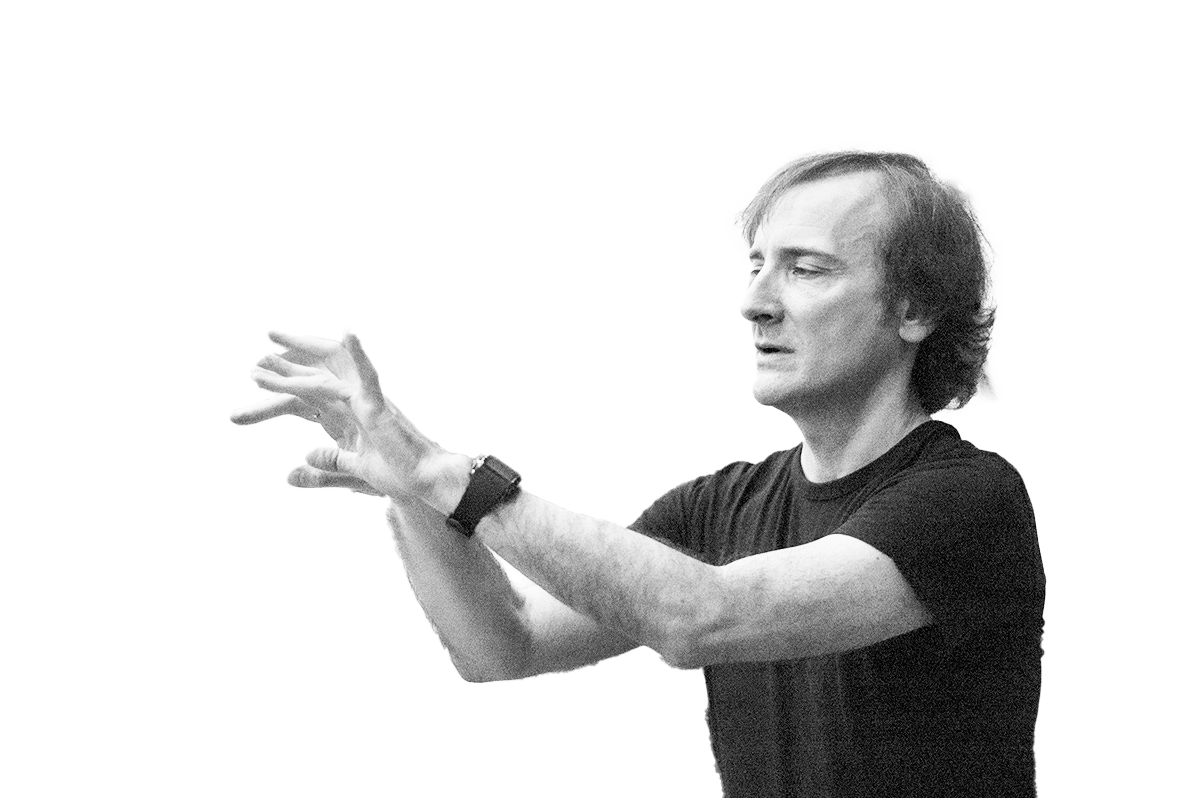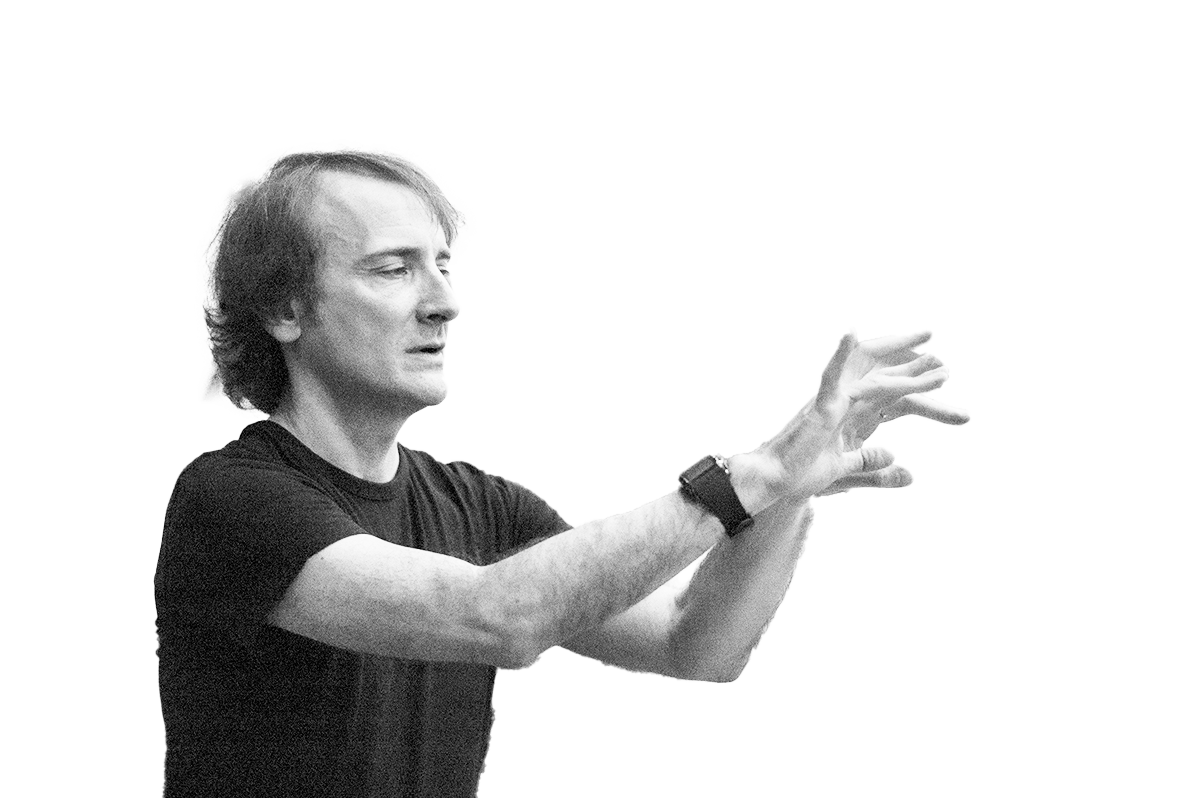FLOATING SOUND GALLERY
Vienna
Mario Mary
Teacher, Composer, Researcher

photo by Gabriel GS.
Mario MARY holds a PhD in “Aesthetics, Sciences and Technology of the Arts” (Paris 8 University, France). He is currently Professor of Electroacoustic Composition at the Academy Rainier III of Monaco and Artistic Director of Monaco Electroacoustique - International Encounters of Electroacoustic Music.
Between 1996 and 2010 he taught Computer Assisted Composition at Paris 8 University, where he created and directed the Concerts Series of Computer Music.
Mario Mary begins his musical studies in Argentine, where he's graduated as Composition Professor at the National University of La Plata. Simultaneously, he studied Orchestral Conducting and Computer Music. Since 1992 he has continued his studies in Paris, at GRM, National Conservatory of Music, IRCAM and Paris 8 University.
He worked as a composer-researcher on the IRCAM: AudioSculpt Cross-Synthesis Handbook and Des traitements en AudioSculpt contrôlés par Open Music (interfaces Open Music for AudioSculpt).
Teacher, researcher and composer, Mario MARY, won more than twenty prizes in competitions of instrumental, electroacoustic and mixed media music composition in France, Italy, Belgium, Finland, Portugal, Czech Republic, Brazil and Argentina. Gave a hundred lectures and courses in different countries in Europe and Latin America. His aesthetic concerns are oriented towards the search for music that generates signs emerging from the aesthetic tendencies of the new century. Since the 90s he has developed the techniques of Electroacoustic orchestration and Polyphony of space. His works are played in the most important international manifestations of contemporary music.
2261, 10’51″ / 2009
Electroacoustic work (original version on 8 tracks)
Commissioned by INA-GRM. Realized at the GRM and in the composer’s studio
Mention Métamorphoses 2010 (Belgium)
Mention Musica Viva 2011( Portugal)
Dedicated to Alma
The latest report of the Institute of Scientific Musicology in Paris, dated April 2261, describes a shocking discovery: A team of researchers found a message coded in « 4DS » (sound system in 4D, patented by the company Trucho Sound) in a electroacoustics work of the beginning of the 21st century. This fact is really difficult to explain, because the first experiences with the fourth sound dimension and their possibilities of transmission on different quadri-dimensional planes began two centuries after this composition was realized. After this discovery, several hypotheses were proposed to explain this enigma, but none is convincing. For example, it was first suspected that someone had subsequently introduced the message encoded in the work, but researchers are sure to work on the original data, ie the format « 4DS » was introduced from the original version. Paradoxically, these same scientific musicologists categorically reject the possibility that the composer, or his environment, had this technology to use at the time of composition or its dissemination in concert. In addition, the scientific world is astonished to only think of the psychological effect that a sound projection in « 4DS » could have provoked in the public present the night of the premiere of this piece in 2009 (!). Even if this distant and anachronistic concert is more than unlikely, scientific researchers are very perplexed at the title of the play, because it indicates exactly the year in which this encoded and hidden message would be discovered by scientific musicologists. For its part, the company Trucho Sound has not wanted to comment on this discovery, and has banned any possibility of disclosure of the content of the encoded message of the work.
Polyphonic Philosophy, 10’42″ / 2015
Electroacoustic work on 8 tracks – World Premiere
Commissioned by the ICST – University of Zurich, Switzerland
Composed in the ICST and the study of the composer
Dedicated to Åke Parmerud
Continuing the aesthetic exploration about "electroacoustic orchestration" and "polyphony of space" of the previous works "Signes émergents" and "2261", the first section of this composition develops in the horizontal plane a concept that could be called "melody of sound objects". Here, polyphony and counterpoint of the musical discourse is interwoven through with small sound objects, creating polyphony and counterpoint taking advantage of the possibilities offered by the multitracks space with 8 tracks around public.
Belgium Snob, 12’47″ / 2017
Electroacoustic work on 8 tracks
Dedicated to Annette Vande Gorne
Followed by receiving the Exhibitronic Prize 2016 I participated in a residency in Music and Research. In the mythical Ohain studio the piece Belgium Snob was created - between 16 and 25 February 2017. Even I was surprised when I realised that this entire composition was composed in such a short time. The magic of the place provided the perfect environment to create and finish a new piece during those ten days and nights of the Belgian winter.
I generally try in my work, I try to create something different and unique with each new composition. This one starts with slow velocity (a rare thing for me). The second section (the heart of the composition) explores some of the possibilities of polyphonic space where several sound elements travel simultaneously and independently. In the third part of the piece, there is a surprising element that has a snobbish character to me. It develops and integrates gestures and materials from the previous part of the composition, creating a great polyphonic density.
Le sophistiqué son du Dasein, 17’ / 2018
Electroacoustic work on 8 tracks
Commissioned by INA-GRM
Dedicated to Alma
Philosopher Martin Heidegger defined the subject (man) as "Dasein" (being-there). The individual, that was brought into this world without having chosen the basic conditions and context for it´s existence, will gradually make all sorts of decisions that will result in it living an "inauthentic life" governed by a conventional and banal daily routine, or an "authentic life", where it asks itself questions about being and follows it´s own path. Of all existing possibilities provided by "Dasein", one is inescapable: it´s own death. Despite the inevitable fact that it has to die one day, it decides to do something with it´s life.
Although these few words reduce the enormous depth of some of the aspects of Heidegger's thought, they can serve to understand the spirit of the conception of this composition. It embodies an authentic approach: it is realised through personal techniques, enriched by thoughtful electroacoustic orchestration and spatial polyphony – two techniques that permeate my work. In this piece, I had an emphasis on the quality of the sound materials. This is the essence of electroacoustic art. And I have also taken a special interest in the musical discourse that takes the listener through the different parts of the piece in a fluid way.
